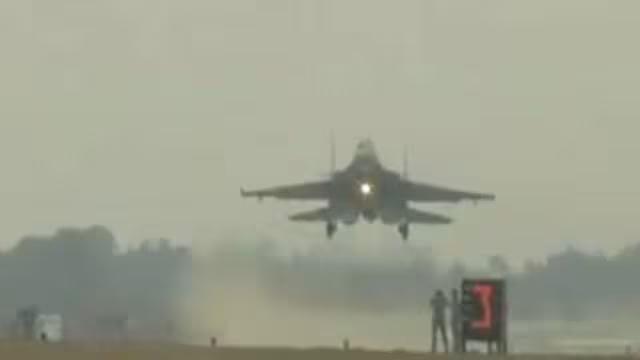
Why is IAF Conducting Fighter Jets’ Landing & Take-off Drill at Ganga Expressway in UP?
In a move that has sent shockwaves across the country, the Indian Air Force (IAF) recently conducted a series of take-off and landing exercises on the Ganga Expressway in Uttar Pradesh. The exercise, which involved fighter jets like the Rafale, was aimed at assessing the expressway’s potential as an alternative runway during times of war or national emergencies. But what’s behind this sudden development? Why is the IAF interested in the Ganga Expressway, and what does it mean for the country’s defense capabilities?
To understand the significance of this drill, it’s essential to take a closer look at the Ganga Expressway itself. Spanning over 340 kilometers, the expressway is a strategic infrastructure project that connects the cities of Lucknow and Prayagraj in Uttar Pradesh. While it was initially designed to reduce travel time and improve connectivity, the IAF’s recent exercise suggests that the expressway may have a dual purpose.
The IAF’s decision to conduct the exercise on the Ganga Expressway is significant because it marks the first time that any expressway in India has been equipped to handle both day and night landings of fighter jets. The exercise involved a range of fighter jets, including the Rafale, which is one of the most advanced combat aircraft in the world. The IAF’s aim was to test the expressway’s capabilities to handle multiple sorties of fighter jets, both during the day and at night.
So, what’s driving the IAF’s interest in the Ganga Expressway? According to sources, the IAF is exploring alternative runways to ensure the country’s air defense capabilities remain robust, even in the event of a national emergency. The Ganga Expressway, with its vast expanse and strategic location, offers a unique opportunity for the IAF to establish a temporary or even permanent airbase.
The IAF’s exercise on the Ganga Expressway is also seen as a response to the deteriorating security situation along the India-Pakistan border. The IAF’s ability to quickly deploy fighter jets to remote locations is critical to maintaining national security, and the Ganga Expressway offers a potential solution to this challenge.
Another key factor driving the IAF’s interest in the Ganga Expressway is its proximity to the Indo-China border. As tensions between India and China continue to rise, the IAF needs to be prepared to respond quickly to any aggression. The Ganga Expressway’s proximity to the border makes it an attractive option for the IAF to establish a temporary airbase, enabling it to rapidly deploy fighter jets to the region.
The IAF’s exercise on the Ganga Expressway has significant implications for the country’s defense capabilities. It underscores the IAF’s commitment to maintaining a robust air defense system, even in the face of evolving security challenges. The exercise also highlights the importance of infrastructure development in supporting the country’s military capabilities.
In conclusion, the IAF’s recent exercise on the Ganga Expressway is a significant development that underscores the importance of infrastructure development in supporting the country’s defense capabilities. The exercise marks the first time that any expressway in India has been equipped to handle both day and night landings of fighter jets, and it highlights the IAF’s commitment to maintaining a robust air defense system. As the country continues to face evolving security challenges, the IAF’s ability to quickly deploy fighter jets to remote locations will be critical to maintaining national security.






